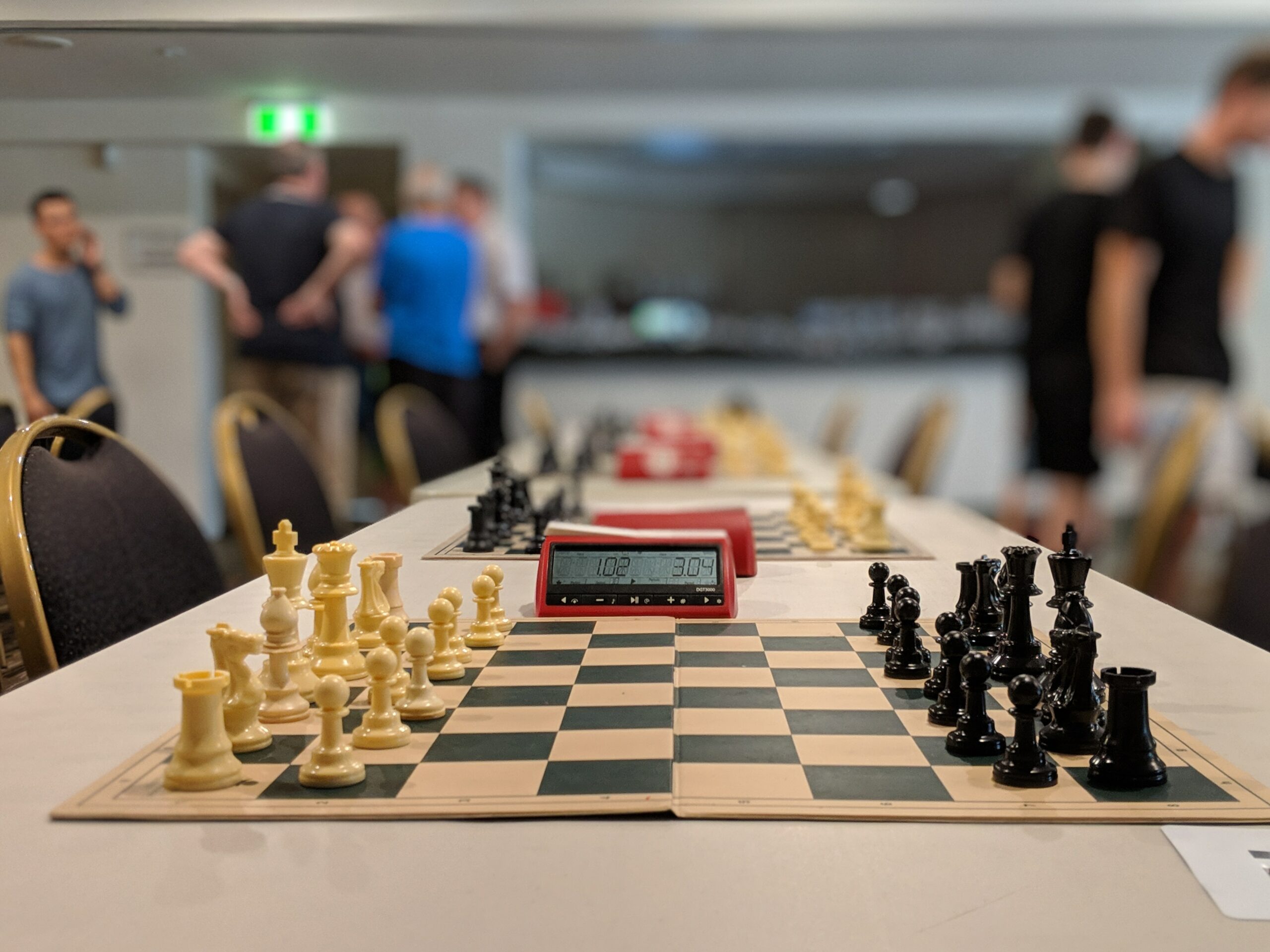The Benoni Defense is a dynamic and exciting opening in chess that has intrigued players for decades. If you’re looking to enhance your chess repertoire and gain an edge over your opponents, mastering the Benoni Defense is an excellent choice.
In this comprehensive guide, we will delve into the intricacies of this opening, explore key strategies, and provide valuable insights to help you play against the Benoni Defense like a true chess master.
What are the key principles behind the Benoni Defense strategy?
To effectively play against the Benoni Defense, it is essential to grasp the key principles underlying this strategic opening. Firstly, maintaining a strong center control is of utmost importance. The battle for the center influences the entire game, and you must strive to establish your presence there.
Secondly, developing your pieces harmoniously is crucial. Piece activity plays a significant role in breaking down Black’s defense and gaining an advantage. Lastly, exploring tactical possibilities is essential in the Benoni Defense.
Which variations within the Benoni Defense should I be aware of?
The Benoni Defense offers various variations, each with its own unique characteristics and challenges. Two notable variations to be aware of are the Modern Benoni and the Classical Benoni.
The Modern Benoni, characterized by the move order 1.d4 Nf6 2.c4 c5 3.d5 e6, aims for immediate counterplay by attacking White’s central pawns. On the other hand, the Classical Benoni, starting with 1.d4 Nf6 2.c4 e6 3.Nf3 c5 4.d5 exd5 5.cxd5 d6, focuses on a solid pawn structure and long-term strategic plans.
What are the common mistakes to avoid when playing against the Benoni Defense?

Playing against the Benoni Defense can be challenging, but avoiding common mistakes can give you a significant advantage. One mistake to steer clear of is underestimating Black’s counterplay potential. The Benoni Defense offers dynamic opportunities for Black to create tactical complications and launch aggressive attacks.
Another mistake is neglecting the development of your own pieces. It is crucial to prioritize piece activity and ensure your forces are ready for both defensive and offensive actions.
Lastly, falling into passive play and allowing Black to dictate the pace of the game can be detrimental. Active and aggressive play is often rewarded in the Benoni Defense.
How can I exploit weaknesses in my opponent’s Benoni Defense setup?
Identifying and exploiting weaknesses in your opponent’s Benoni Defense setup is key to gaining a substantial advantage. One common weakness is the backward pawn on the c-file, often resulting from Black’s pawn structure.
Exploiting this weakness involves focusing your forces on attacking and potentially capturing this pawn. Additionally, weak squares in Black’s position, such as d6 and e6, can become targets for your pieces.
Targeting these vulnerable squares can disrupt Black’s coordination and place them under pressure. However, it’s essential to carefully assess the position and ensure your own position remains solid.
How does the Benoni Defense impact the opening phase of a chess game?
The Benoni Defense’s impact is felt right from the opening moves. It begins with 1.d4 Nf6, where Black aims to delay central pawn development, opting for a solid setup. As a result, the center becomes a battleground, and control over it becomes crucial.
Black challenges White’s central control with the move 2.c4 c5, forming the Benoni Defense structure. This move allows Black to create dynamic counterplay and attack White’s central pawns. As the game progresses, understanding the implications of each move and formulating key strategies is vital to navigating through the Benoni Defense successfully.
| Opening Move | Implication | Key Strategies |
|---|---|---|
| 1.d4 Nf6 | Black aims for a solid setup, delaying central pawn development | – Focus on controlling the center – Consider pawn breaks like e4 or f4 – Develop minor pieces harmoniously |
| 2.c4 c5 | Benoni Defense formation, Black challenges White’s central control | – Maintain a strong center control – Develop pieces to support the center – Explore tactical possibilities |
| 3.d5 e6 | Black aims for dynamic counterplay, attacking White’s center pawns | – Assess the safety of capturing Black’s e6 pawn – Develop pieces while considering pawn breaks – Be prepared for tactical complications |
| 4.Nc3 exd5 | White captures back on d5, opening up the position | – Evaluate capturing with the queen or knight – Develop remaining pieces effectively – Consider central pawn breaks and piece activity |
| 5.cxd5 d6 | Black reinforces the central pawns, solidifying their position | – Focus on piece development and central control – Be cautious of tactical opportunities for both sides – Plan pawn breaks and minor piece maneuvering |
What are the best pawn breaks to consider against the Benoni Defense?
Pawn breaks play a vital role in the Benoni Defense, allowing you to undermine Black’s pawn structure and create tactical opportunities. Two prominent pawn breaks to consider are e4 and f4. The break e4 aims to open up the center and create avenues for your pieces to attack Black’s position.
Timing and accurate calculation are crucial when executing this break. On the other hand, the f4 break aims to create aggressive counterplay against Black’s Kingside. It can lead to open lines and potential attacks, but it should be approached cautiously, considering potential weaknesses it might create in your own position.
How do I develop my pieces effectively against the Benoni Defense?

Effective piece development is essential when playing against the Benoni Defense. It allows you to establish a strong presence, coordinate your forces, and launch successful attacks. Prioritize developing your minor pieces, such as knights and bishops, to squares that actively influence the center.
Knights on strong outposts can put significant pressure on Black’s position. Additionally, deploying your rooks to open files and the center can lead to powerful attacks and exert control over crucial squares. Aim for efficient piece development while considering potential tactical opportunities that may arise.
What are the critical middlegame plans in countering the Benoni Defense?
The middlegame stage is pivotal in countering the Benoni Defense effectively. One critical plan is to capitalize on the weaknesses left by Black’s aggressive play. Exploiting weaknesses like backward pawns, exposed king positions, or poorly coordinated pieces can lead to tangible advantages.
Another plan is to centralize your pieces and prepare for a pawn break or a tactical assault. Consolidating your forces and creating threats can put Black on the defensive and dictate the course of the game. Assess the position carefully, consider piece activity, and formulate strategic plans that exploit the Benoni Defense’s inherent imbalances.
How can I create tactical opportunities against the Benoni Defense?
The Benoni Defense often presents rich tactical opportunities for both sides. Being tactically alert and proactive is crucial to create and exploit these opportunities. Look out for tactical motifs like forks, pins, and skewers that can arise due to Black’s pawn structure or loose piece coordination.
Furthermore, maintaining a keen eye for tactical shots during pawn breaks or piece maneuvers can catch your opponent off guard. Calculating accurately and assessing potential tactics will enable you to launch tactical assaults and seize the initiative in the game.
What are the strategic nuances in the endgame when facing the Benoni Defense?
Navigating the endgame against the Benoni Defense requires a solid understanding of strategic nuances. One strategic principle is to prioritize pawn structure and weaknesses. Targeting Black’s isolated pawns or weak pawn chains can create long-term advantages.
Additionally, optimizing your piece activity and coordination is vital. Active rooks, centralized kings, and well-placed minor pieces can dominate the endgame. Finally, recognizing the potential for breakthroughs and promoting passed pawns is essential in securing a favorable outcome.
How do I handle the pressure from my opponent’s Benoni Defense attack?
Playing against the Benoni Defense often involves facing aggressive attacks and intense pressure from your opponent. To handle this pressure effectively, it is crucial to remain calm, composed, and focused.
Firstly, ensure your king’s safety by maintaining a solid pawn shield and safeguarding against potential threats. Secondly, seek counterplay and tactical opportunities to shift the balance of the game. Creating threats of your own can force your opponent to defend and alleviate the pressure.
Lastly, accurately evaluate sacrifices or defensive resources to neutralize your opponent’s attacking chances. Handling the pressure from the Benoni Defense requires a balanced approach of defense, counterplay, and tactical awareness.
What are the psychological aspects to consider when playing against the Benoni Defense?
Chess is not just a battle of pieces on the board but also a psychological struggle. When playing against the Benoni Defense, certain psychological aspects come into play. One aspect is to remain confident and focused, even when facing aggressive attacks.
Confidence in your strategic understanding and calculation abilities can help you weather the storm and find the best moves to defend and counterattack. Another aspect is patience. The Benoni Defense often leads to complex and sharp positions.
Taking the time to evaluate each move and not rushing decisions is crucial to make sound choices.
How do I defend against aggressive pawn storms in the Benoni Defense?

The Benoni Defense is known for its aggressive pawn storms, where Black advances pawns to attack your position. Defending against these pawn storms requires a balanced approach. Firstly, maintain a solid pawn structure and prioritize king safety.
This involves creating a sturdy pawn shield and fortifying potential weaknesses. Secondly, seek counterplay and tactical opportunities during the storm. While defending, look for tactical shots, undermining moves, or exploiting weaknesses in Black’s position.
Lastly, accurate calculation and assessing potential pawn breakthroughs or sacrifices can neutralize the aggressive pawn storms and turn the tide in your favor.
What are the best resources to study and improve my understanding of the Benoni Defense?
If you’re eager to study and improve your understanding of the Benoni Defense, there are several excellent resources available to aid your learning journey. These resources offer comprehensive analysis, strategic insights, and annotated games to enhance your knowledge of this dynamic chess opening.
Consider exploring the following options:
-
Books: “The Complete Benoni” by Lev Psakhis and “The Benoni: Move by Move” by Junior Tay provide in-depth coverage and valuable insights into the Benoni Defense.
-
Online platforms: Chess websites and online forums offer a wealth of resources, including tutorials, articles, and forums where you can discuss and learn from fellow chess enthusiasts.
-
Video tutorials: Renowned chess experts often provide video tutorials dedicated to the Benoni Defense, offering practical guidance and analysis of notable games.
-
Analyzing master games: Studying games played by grandmasters and top-level players can provide valuable insights into the strategic nuances and tactical opportunities of the Benoni Defense.
In Conclusion
Mastering the Benoni Defense is a rewarding endeavor that can greatly enhance your chess skills and repertoire. By understanding the key principles, studying various variations, avoiding common mistakes, and implementing effective strategies, you can confidently play against the Benoni Defense and outplay your opponents.
Remember to remain alert to tactical opportunities, adapt your plans to the middle game and endgame, and consider the psychological aspects of the game. With practice, study, and a solid understanding of the Benoni Defense, you can elevate your chess game to new heights.




